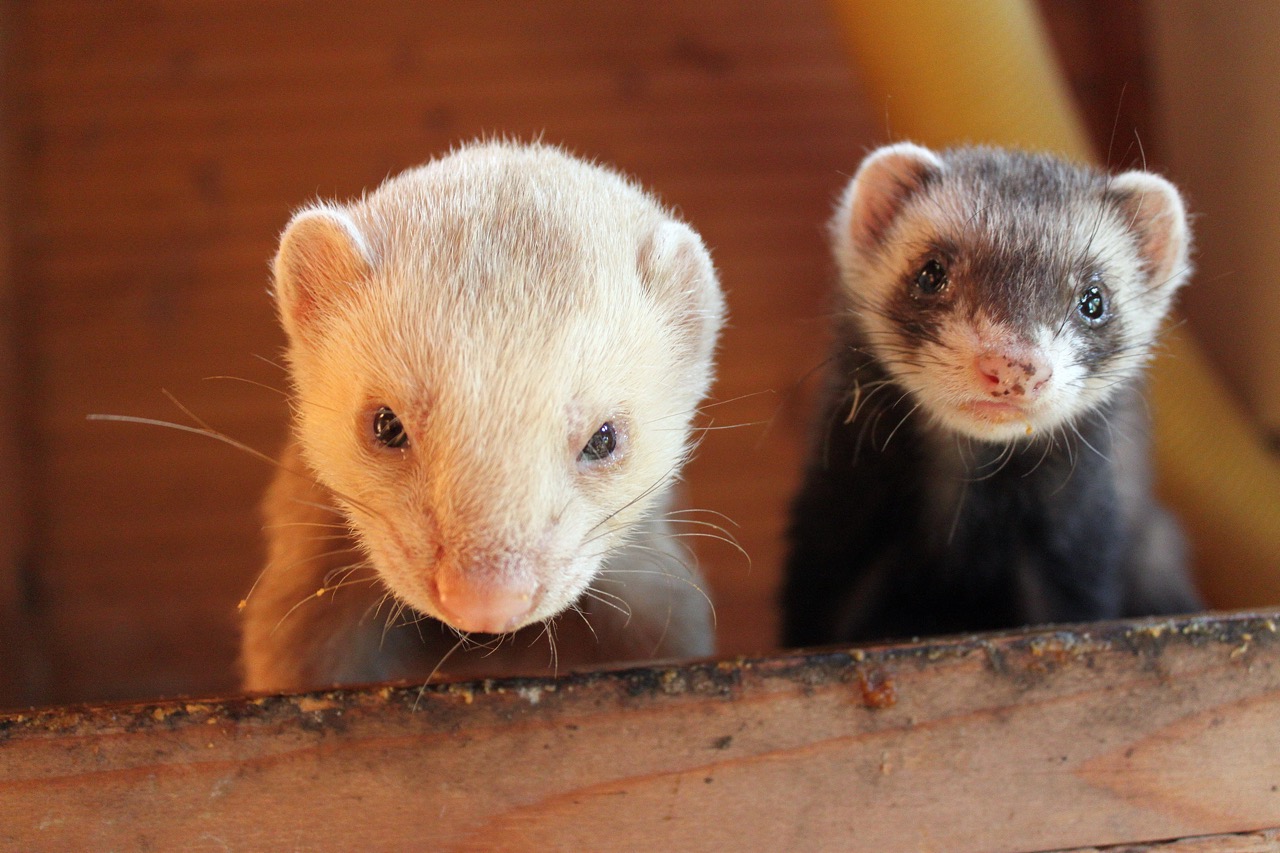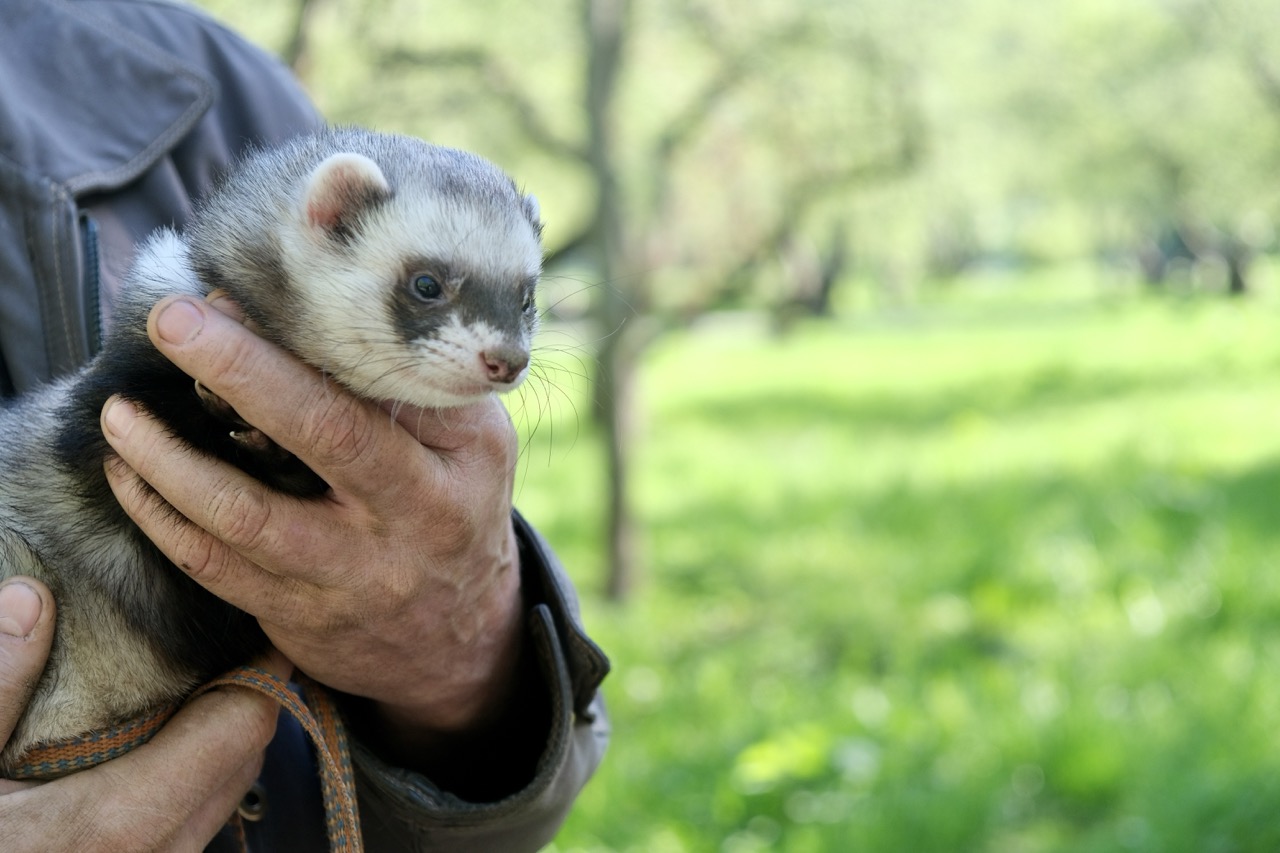Ferrets are fascinating creatures that have gained popularity as pets due to their playful nature and inquisitive demeanor. Understanding ferret behavior is essential for anyone considering adopting one of these unique animals. By gaining insight into their social structures, common behaviors, and signs of emotional well-being, prospective and current ferret owners can create a nurturing and stimulating environment for their pets. This article aims to unravel the complexities of ferret behavior, providing valuable information for better care and companionship.
The Unique Social Structure of Ferret Communities
Ferrets, scientifically known as Mustela putorius furo, display a sociable nature that is deeply rooted in their evolutionary history. As domesticated descendants of the European polecat, ferrets are inherently social animals that thrive in groups. In the wild, they form colonies consisting of a hierarchy where individuals interact through grooming, playing, and hunting cooperatively. This social behavior is a vital component of their well-being and development.
In a home environment, ferrets require social interaction, whether with their human caregivers or other ferrets. Owners often find that keeping multiple ferrets together can replicate the social structure they instinctively seek. These interactions not only promote physical activity but also provide mental stimulation, reducing the likelihood of behavioral issues stemming from boredom or loneliness. Consequently, understanding their natural inclination toward companionship is crucial for fostering a happy and healthy pet.
However, introducing new ferrets into existing setups should be approached with caution. Ferrets can exhibit territorial behavior, especially if they feel their space is being invaded. Gradual introductions and careful monitoring can help ease tensions, allowing them to establish their social dynamics in a safe and controlled manner. By respecting their unique social structures, owners can create a harmonious living environment that caters to the ferret’s need for companionship.
Common Behavioral Traits of Ferrets Explained
Ferrets are known for an array of charming and sometimes mischievous behaviors that can be both entertaining and perplexing to their owners. One of the most notable traits is their propensity for play, which manifests through activities such as tunneling, climbing, and engaging with toys. Their playful nature not only serves as a form of exercise but also stimulates their curious minds, encouraging exploration and discovery.
Another common behavioral trait is the "ferret war dance," a series of joyful hops, twists, and turns that signify excitement or playfulness. This behavior often occurs when ferrets are particularly energetic or when they are engaging with their human companions. Understanding this behavior allows owners to recognize when their ferret is in a playful mood, encouraging further interaction and bonding through games and playtime.
Additionally, ferrets have a unique way of communicating with one another and their human companions. They utilize vocalizations such as chirps, whines, and growls to express their feelings. Observing these sounds in conjunction with body language can provide valuable insights into their emotional state. Through consistent interaction and observation, owners can learn to interpret these vocal cues, ultimately fostering a deeper bond with their ferrets.
Recognizing Signs of Stress and Contentment in Ferrets
Just as it is essential to understand positive behaviors in ferrets, recognizing signs of stress or discomfort is equally important. Common indicators of stress in ferrets include excessive hiding, changes in eating or drinking habits, and aggressive behaviors such as biting or nipping. These signs often suggest that the ferret is feeling threatened or uncomfortable in its environment, which could stem from factors such as inadequate socialization, sudden changes in routine, or environmental stressors.
Conversely, content ferrets exhibit specific behaviors that demonstrate their well-being. Relaxed body posture, playful interactions, and vocalizations such as soft chirps indicate a comfortable and happy ferret. When a ferret rolls onto its back, exposing its belly, it is often a sign that it feels safe and secure in its environment. Recognizing these positive signs can reassure owners that their ferret is thriving and content.
Monitoring your ferret’s behavior regularly can help in identifying any changes that may indicate stress or discomfort. Implementing a consistent routine and providing a safe, enriched living space can significantly contribute to a ferret’s overall well-being. By remaining attuned to their emotional states, owners can intervene appropriately, ensuring that their pet is living a fulfilling and healthy life.
Tips for Encouraging Positive Ferret Behavior at Home
Creating a stimulating and enriching environment is vital for encouraging positive behavior in ferrets. Providing various toys, climbing structures, and tunnels can engage a ferret’s natural instincts to explore and play. Rotating toys regularly can keep the environment fresh and exciting, preventing boredom and encouraging active play. Additionally, dedicating time each day for interactive play can strengthen the bond between owner and pet while promoting physical activity.
Socialization is also key in fostering positive ferret behavior. If you own multiple ferrets, allowing them to interact with one another can satisfy their social needs. For single ferret households, spending quality time with your pet and engaging in activities such as cuddling, playing fetch, or training can help meet their social requirements. Additionally, exposing your ferret to various environments, people, and other pets can enhance their adaptability and confidence.
Lastly, providing a safe and secure space for relaxation is essential. Ferrets require a designated area where they can retreat and feel secure. This can include a cozy bed, hideaway, or quiet corner in their living space. A calm environment allows ferrets to recharge and helps minimize stress, ultimately promoting healthy behavioral patterns. By implementing these practices, owners can cultivate a nurturing atmosphere that supports their ferret’s well-being and happiness.
Understanding ferret behavior is crucial for anyone looking to provide a loving and supportive home for these engaging creatures. By familiarizing yourself with their unique social structures, common behavioral traits, and emotional expressions, you can foster a positive relationship with your ferret. Implementing strategies to enhance their environment and social experiences will not only contribute to their well-being but also lead to a more fulfilling companionship for both you and your pet. With patience, observation, and a commitment to understanding, you can ensure your ferret leads a happy, healthy, and enriched life.










